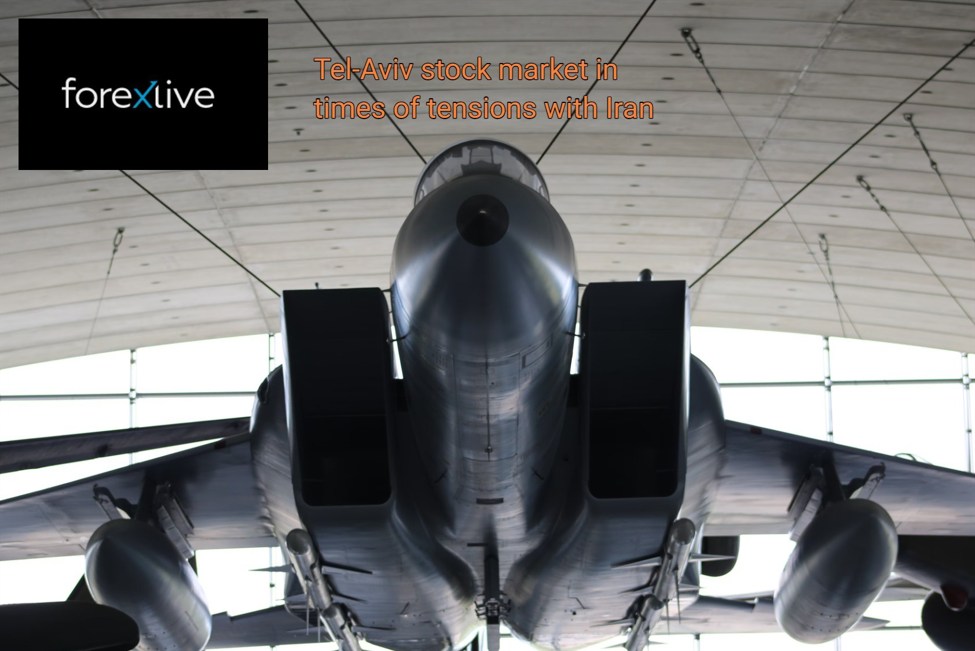Tel Aviv’s actions and global sentiment amid Iran-Israel tensions

In an environment where geopolitical tensions are intensifying, particularly between Israel and Iran, investors are closely monitoring the TA-35, an index tracking the 35 largest companies on the Tel Aviv Stock Exchange. The TA-35 index serves as a barometer of Israel’s economic pulse and, by extension, how the country is navigating the murky waters of regional conflict.
- Important note: The analysis provided here is intended for informational purposes only and should not be construed as financial advice.
The Tel Aviv Stock Exchange in times of tension with Iran
Never mind Israel and Iran, I trade other stocks…
We’re not sure why, but tensions in the Middle East often play a role in global sentiment and stocks more than some might imagine. It’s not just oil or other defense sector stocks, but also other elusive waves of sentiment that spread in the financial media. I’ve always wondered why Al Jazeera seems totally obsessed with its focus on Israel, when it seems there is almost no other news in the world and Israel is still responsible for everything that happens. passes through this troubled region… Oh, how convenient. .
But whatever your opinions, and God bless you, geopolitical tensions also have at least one important sentiment factor on your actions.
Understanding the technical prospects of the TA-35
Nobody knows what the future holds. Certainly not. But I like to identify likely continuations of patterns, as has happened in the past. For example, on some time frames, after a breakout, the price does not immediately continue to skyrocket, but refuses to retest the breakout line/zone. Or that bull flags, after being broken higher, are often retested in the future, and even more than once.
The following daily chart of the TA35 shows a bull flag pattern, suggesting a continuation of the uptrend after a successful retest. Retesting the pattern often validates the previous breakout, providing possible future insights into market sentiment and when it may turn positive from negative, if that happens… FOLLOW THIS POTENTIAL MAP AND WATCH FOR A REVERSAL AROUND 1830, IF IT HAPPENS. Under this scenario, the index tracks the 35 largest companies on the Tel Aviv Stock Exchange fell another 5 to 6 percent before the reversal zone. If the U.S. stock market, particularly Nasdaq futures, falls another 5 percent or so, then both could then be ripe for an early bet to reverse. This would be an early and interesting bet, even for the swing trader.
TA-35 daily chart with potential retest trajectory
Sectors under the microscope
Defense and security
- Examples: Companies such as Elbit Systems and Israel Aerospace Industries, which may experience increased demand during times of heightened security concerns.
Energy
- Examples: Companies like Delek Drilling and Isramco Negev 2 LP, which could be affected by changes in global oil prices and energy demand.
Technology
- Examples: Globally recognized names such as Check Point Software Technologies and Wix.com, which could face mixed impacts depending on the global economic outlook.
Watch the price of oil
The price of oil has always been a sensitive indicator of geopolitical tensions in the Middle East. Here are two examples that illustrate this relationship:
-
1973 oil crisis:
- Event: The Yom Kippur War led oil-producing Arab countries to impose an embargo against the United States and other countries that supported Israel.
- Oil price reaction: Oil prices quadrupled, from around $3 to $12 per barrel.
- Economic impact: The crisis triggered a stock market crash and led to a global recession, with long lines at gas stations and severe economic disruption around the world.
-
Gulf War 1990-1991:
- Event: Iraq’s invasion of Kuwait in August 1990 immediately raised concerns about the security of oil supplies.
- Oil price reaction: Crude oil prices doubled from $15 to $41 per barrel.
- Economic impact: This price surge contributed to a recession in the early 1990s in the United States and other countries, illustrating the vulnerability of the global economy to the geopolitical dynamics of the Middle East.
These examples highlight how regional tensions can quickly alter the supply and perceived security of oil, thereby influencing global prices and economic stability.
The technical analysis provided, including the predicted movement of the TA-35 Index, serves as an opinion and possible tool for investors, when reviewing them, to evaluate potential market movements. However, it is essential to combine such analysis with a comprehensive understanding of current events and their possible economic impacts. The TA35 chart in this article is used to demonstrate the technical patterns discussed and is not indicative of future market movements. Visit ForexLive.com for additional views, opinions, news and analysis.
cnbctv18-forexlive





